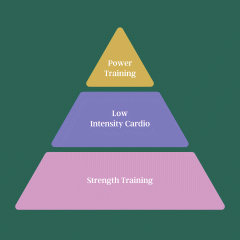Most of us want to have better experiences than we might have had in the past or be currently experiencing today. This can often involve needing to step into situations we haven’t navigated before. It can involve uncertainty and hold opportunities for us to have unpleasant and/or pleasant experiences.
Our brains are primarily designed to keep us safe and balanced, physically mentally and emotionally. However, most of us know deep inside that repeating the same patterns and expecting a different result is nonsensical. There comes a tipping point when it’s time to take a chance. Taking more chances involves taking risks. This can be scary!
Traditionally, taking risks is only for the bold and courageous. We associate there being a higher chance of having negative experiences; pain, disappointment, failing, getting injured. Because our brain is wired for safety and survival, these perceptions often hijack our decision-making so are drawn back to maintain the status quo.
Despite our instinctive human behavior and thinking, there are ways we can prevent this hijack so we can take more chances in life.
Whether or not you are a leader of a team or wanting to make progress in one or more areas of your personal life, these 5 proven risk-taking tips will maximize your capacity to move forward further and faster.
1. Routinely Review Your Circle of Control to Help You Plan What Risks to Take
In his best-selling book, The 7 Habits of Highly Effective People, Stephen R. Covey explained how our point of greatest effectiveness will be when we are operating from our sphere of direct control. When we dedicate our energy and attention to trying to change things that aren’t in that sphere, we experience discomfort and pain we may not be equipped to manage. We can also become vulnerable to a far longer recovery process as a result.
The inner-most circle is the circle of control. It represents what you have direct and ultimate jurisdiction over:
Your thoughts Your choices Your decisions Your behavior and actions Your mood Your mental state Your responses and reactions Your mental, emotional and physical statesThe second outer circle – the circle of influence – represents exactly that; what you influence. You don’t have direct control over the following, but how you operate from your own circle of control can have ripple effects on people and situations around you:
Your relationships, your children’s happiness, safety and wellbeing How others respond to you, how they perceive you Your work productivity, whether you get promoted or not Who follows you on social media Who you vote for Your development of skills, improvement of competency The success of your businessThe outermost circle represents the ‘circle of concern’. These are situations and relationships for which you hold in your mind and heart as important. They are things you often have little control and influence over, however, they impact you:
Systems and institutions (e.g. your employer, governments) Environmental issues The economy Natural events and disastersIf you don’t naturally self-identify as a risk-taker, start by taking risks where you have the highest level of control. You are more likely to succeed, increase your ability to assess, plan and executing taking risks. This in turn fuels your motivation and readiness to take risks and chances in the future.
How much can you truly control and/or influence when addressing how you are being bullied at work? Look at the different aspects of your situation and see which circle each aspect resides in. Referring to Covey’s concentric model can help you determine what risks are in front of you and which ones are better for you to take.
2. Adopt a Gamified Perspective to Increase Risk-Taking and Make It More Fun
The mental and emotional pressure we put on ourselves to achieve certain outcomes inflates our perception of risk consequences. We can often feel the stakes are higher. However, what if you applied a different set of expectant outcomes when you are in risk-taking situations?
Gamification has become a more widely used approach in a variety of settings where growth and improvement in performance are desired or required. The application of game dynamics, mechanics and frameworks into non-game settings has demonstrated effectiveness in encouraging risk-taking behavior along with changed perceptions toward the meaning and experience of risk-taking itself.
When researcher Itamar Shatz reviewed the risk-taking behavior of participants learning a foreign language, he found gamification methods increased their risk-taking behavior as well as their performance and self-confidence.
Similar research was undertaken by Ignacio Garcia exploring the effectiveness of popular language-learning application Duolingo identified that using gamification approaches enhanced users’ learning. Learners are driven to advance to higher levels by being awarded points for providing correct answers and being given a couple of opportunities to attempt each question. They feel freer to fail.
When considering risks you might take, ask yourself: Is there a way I can gamify this? If I am feeling high pressure and angst about this risk, how can I inject more fun into the process of taking the risk? Could you engage others to also engage in this risk-taking activity with you? Can you create your own reward system of celebrating your taking chances in the first place?
Reward yourself and celebrate your experiences of taking risks regardless of whether you achieve your main goal. You develop a different emotional attachment to risk-taking exercises and increase your confidence to take more chances in your life.
3. Take Risks Where You Have the Resources to Manage the Consequences
You wouldn’t jump out of a plane without wearing a parachute, nor would you skydive without knowing and following safety protocols. You equip yourself as best as you can for the situation that you are unfamiliar with. Then there is always risk remaining where events can unfold in ways you (and even experts) are unable to predict or foresee.
We are going to be more likely to take risks where we perceive fewer negative consequences are possible and/or we have greater confidence to manage these consequences. How can we then minimize the negative consequences?
Assess the level of risk and close the gap between the resources required and the resources you have. Do a simple needs analysis based on what you identify taking the risk requires and what you have available to you, to meet those needs. Where you identify a gap between your resources and what is required, look to see what is within your control to help you close the gap.
Physical
Do you have enough knowledge to tip you in favor of success in taking the risk? What equipment do you need to maximize your chances of success? What skills and technical competencies do you need? What else do you need to learn or acquire to tip your probability of succeeding to 51% or higher?Emotional
As you think about the risk, how are you likely to react/respond if negative consequences result? What support options and strategies do you have in place to help you take the risk as well as catch you should you be unsuccessful?Mental
How are you currently perceiving the risk? What mental state are you in as you think about taking it? Do you need to first manage negative emotions or need to diffuse heightened anxiety? What mental strategies and exercises do you have in place to help you prepare for taking the risk, experiencing the process of taking it? Do you feel this enough or could you strengthen your approach? Can you anticipate how you will be mentally affected should you fail? What mental strategies do you have in place should you be unsuccessful?Having answers to these questions above won’t only help you determine what risks to take. You will feel greater confidence and control of being able to maximize your chances of succeeding in taking them.
It’s essential you assess your risk-taking capabilities holistically: physically, mentally and emotionally. Because we know through research how our mental and emotional states and past experiences highly influence our perceptions, aptitude and approach to taking risks we must consider all three angles. Doing so will springboard you toward taking more chances toward experiencing a more fulfilling and satisfying life.
4. Regulate Your Emotions Beforehand to Help You Assess What Risks to Take and Prepare to Take Them
In the absence of enough metrics or a frame of reference against which to measure if a chance poses more risk or not, we unconsciously rely on our emotions. In fact, our emotions dictate our self-belief and self-efficacy in situations we perceive to be risky, far more than we may realize.
A recent study conducted at the University of Social Sciences and Humanities in Poland revealed two incredible results:
a) That our emotional state impacts our perception of risk; b) That when we focus on the negative consequences of taking a risk, we perceive the risk to be greaterWhen participants were asked to imagine negative risk consequences, they reported more negative mood states and perceived risk as higher compared to the control condition. The researchers also found that the type of visualizations participants were guided to create, influenced their mood and their perception of whether the risk was higher or lower.
In the third experiment, the researchers found that stress that was irrelevant to the risk itself swayed participants to perceive the risk as greater. So, the more stressed we are in general, the greater risk we will perceive.
This means we need to know our own unique stressors, how they can impact us and how to manage this first. We need to undertake risk assessments and development management strategies from as balanced and regulated emotional and mental states, as possible.
Consider what stressors might be influencing your mental and emotional state when you are undertaking any stages of planning, preparing for or undertaking a risk. Can you reduce or remove them? You may need to recalculate the timing of taking certain risks.
You always want to be in the best mindset possible. Attention might need to be given to other things first to allow you to have a clear enough mind to maximize your success.
Just as you wouldn’t go trekking on a high difficulty mountain trail when a tornado is forecasted, nor might it be the best time to look at changing careers if your intimate relationship is in dire straits.
Don’t rush. Choose your timing wisely embracing the fact that there also may never be a 100% perfect time to take a chance. Simply be considered with it.
5. Always Celebrate All Aspects of Risk-Taking
Taking a risk is also setting a goal. If rewards exist only on the condition of that goal being achieved, this leaves many steps and opportunities for us to balk and opt-out when we feel the risk is too great. We need to insert strong enough reasons for us to stay the course.
Because we know emotions have a strong influence over our decisions, we can cleverly inject positive emotional experiences toward all stages of taking any risk:
a) Assessing the size and type of risk b) Planning and preparing c) Undertaking the risk d) Experiencing the consequencesLearning what resources you currently have is a validating start in itself. You may well discover you are more equipped than you thought! Congratulate yourself (and your team) when you have completed a certain stage in your risk planning. Celebrate this milestone regardless of whether you go ahead with taking the risk past this point or not.
When it comes to undertaking the risk itself, celebrate the fact itself that you are nudging yourself to step into discomfort to grow. You’re testing and trying. At the very least, you are discovering your current capabilities are in this particular experience. You have applied yourself in ways you might not have before. You’re progressing and learning whether you succeed or not!
In April 2020, NASA celebrated the 50th anniversary of the Apollo 13 mission. This mission is referred to as the ‘successful failure’ with the crew returning safely to Earth despite an explosion that foiled their aim to land on the moon. Whether we succeed or not, we must deliberately emphasize rewarding the effort we’ve made to go on the journey in the first place.
Review all the parts of your journey; the good and the bad. Proactively look for the benefits of undertaking the experience. Engage processes to work through the pain, hurt and disappointment you might feel should you have failed. And then, stand up. Look up. Look ahead.
When you look closely enough, every aspect of risk-taking holds a benefit to you. As you rewire what risk-taking means for you, you may start to feel you’re not taking risks at all. You’ll be rubbing your hands together with child-like excitement to take more chances in life.
More Tips on Taking Risks in Life
Featured photo credit: Loic Leray via unsplash.com





























































